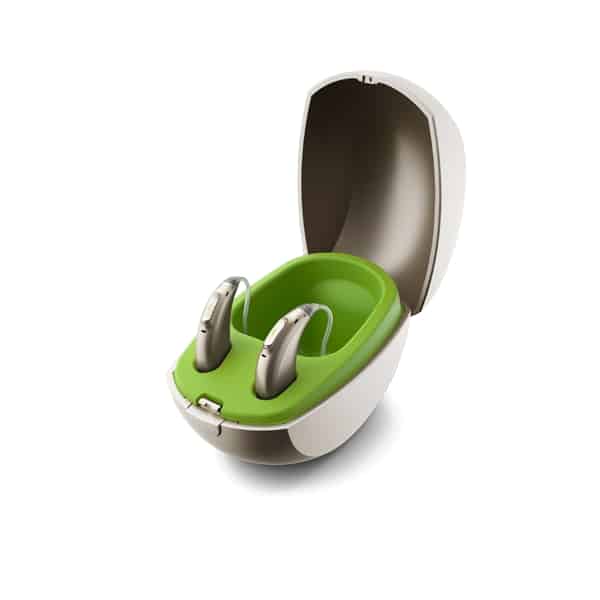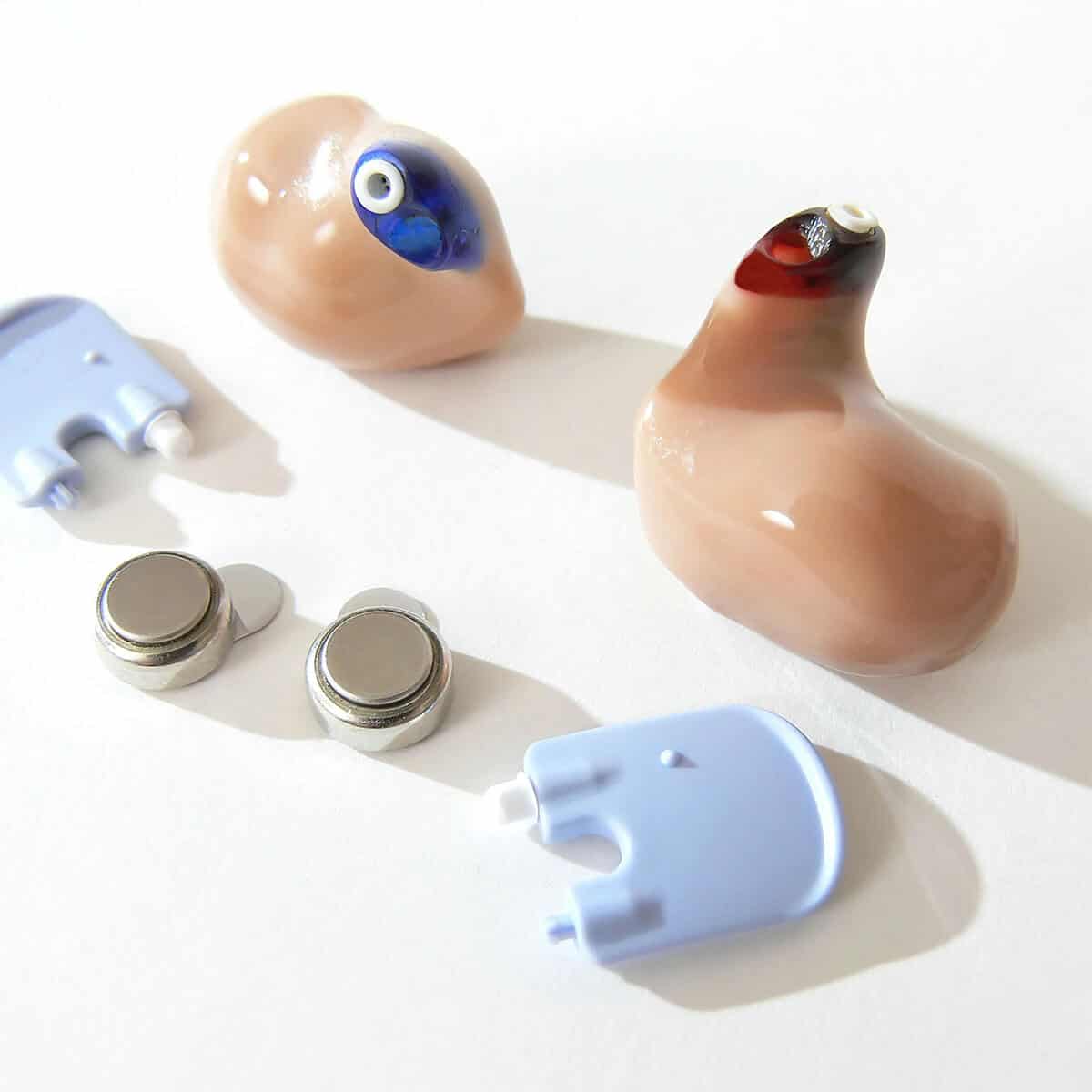Hearing Aid Batteries
Many of the improvements we’ve seen in hearing aid technology in recent years have been allowed by improvements in battery technology. Any time technology is miniaturized, battery power can be the bottleneck that holds back advancements. Take Bluetooth, for example: While nowadays Bluetooth is available in nearly all hearing aids, just a few years ago this was not the case. That’s because Bluetooth drained batteries too quickly.
Since then, not only have batteries improved, but the Bluetooth protocol has been updated to draw less power. Now you can run Bluetooth on your hearing aids and smartphones all day with a negligible difference in battery life.

Rechargeable Hearing Aids
Rechargeable batteries have really taken off in recent years. The lithium-ion batteries used in smartphones and other portable electronic devices are also excellent for hearing aids. Rechargeable hearing aids now provide a minimum of 20 hours of use— more than enough for most days. You simply place your hearing aids in the charger at night, and they’re ready to go again in the morning.
Rechargeables also offer an advantage in terms of water resistance. By not including a battery compartment, the sensitive electronics inside the hearing aids can be more effectively sealed against moisture. Even occasionally submerging them should not cause them to stop working (though avoiding moisture is still the best practice to keep them working their best for longer).
Rechargeable hearing aids are a good option for people who are accustomed to using rechargeable devices. Much in the way you would charge your phone, you need to remember to place your hearing aids on their charging station each night. Rechargeables can also be a much better option for those with arthritis, who may have difficulty manipulating the small compartment doors and tiny batteries used in non-rechargeable hearing aids. For most people, most of the time, rechargeable hearing aids are the better option these days.

Non-Rechargeable Hearing Aids
Hearing aids that use disposable batteries are still readily available. Disposable batteries typically last between 3 and 20 days, depending on their size and how you use them. The disadvantage is that they need to be replaced once they die, and their compartment makes the hearing aids a little more vulnerable to moisture and dirt. Because of their longer life and replaceability, they may be a better option for those who enjoy camping or other activities that may keep you away from a power outlet for long periods of time.
Many models of hearing aids are available in both rechargeable and non-rechargeable options. If it doesn’t make much difference to you whether your hearing aids are rechargeable or not, it may be worth looking at the other features more closely. The great thing about hearing aids is that there is a pair for just about every lifestyle a person can have, so you can be sure to find the pair that’s best for you, whatever your needs may be.
We Have All Types of Batteries
At Advanced Hearing Solutions, we sell all types of hearing aid batteries, and can also replace rechargeable batteries when they have worn out. Most rechargeable batteries today have a lifespan of about 5 years, which may be about the same as your hearing aids themselves, but if your hearing aids are in good shape it may be worth replacing the batteries.
One thing to remember about hearing aids is that the technology moves quickly. Much in the way we tend to replace our smartphones and computers every few years as new technology makes them more powerful, hearing aids tend to have a lifespan of about 3–7 years. In addition to obsolescence, the environment a person lives in, their lifestyle, and even their body chemistry can increase or decrease the lifespan of a set of hearing aids. If you think your rechargeable hearing aids are in need of a new battery, talk to us about the options available and we can help you make an informed decision about whether to replace your batteries, make repairs, or replace your hearing aids.
